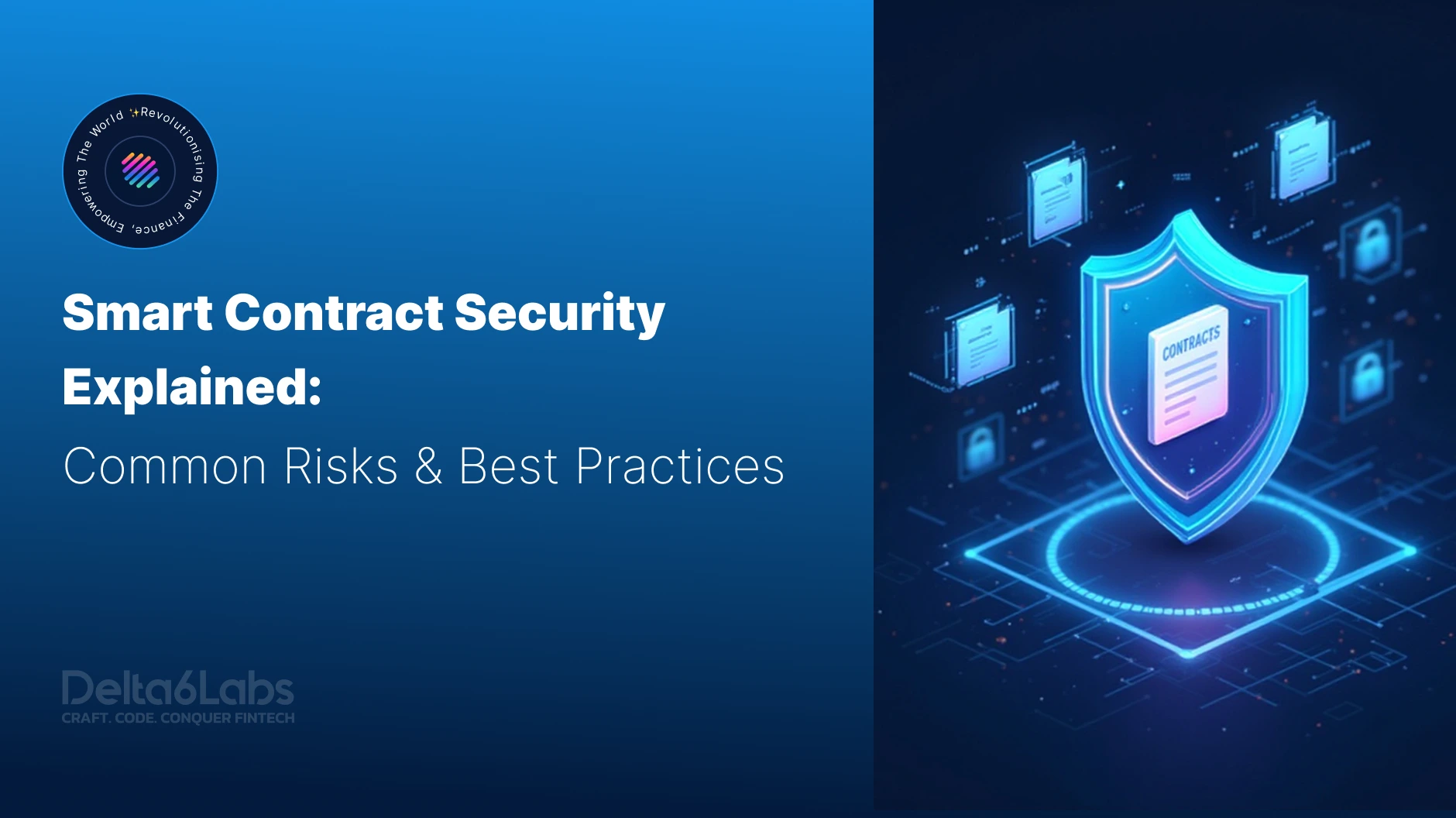Smart Contract Security Explained: Common Risks and Best Practices
Table of Contents
They provide transparency and security to the decentralized applications (dApps). However, there are also some vulnerabilities related to these digital contracts. However, there are also some vulnerabilities related to these smart contracts. They attract more hackers than any other technology due to their increasing popularity. If a hacker gains access to a smart contract’s code, the entire project can be compromised. That’s why it’s vital for developers to prioritize the security during the development process and to conduct regular audits of smart contracts.
Understanding Smart Contract Security
Smart contract security is related to the security procedures followed by blockchain companies during their development. They should be thoroughly checked for vulnerabilities throughout their development, design, testing, and deployment phases. The primary objective of prioritizing smart contract security is to mitigate financial losses and minimize risks.
Risks Associated with Smart Contracts
Here are the risks associated with the security of smart contracts:
Re-entrancy
A reentrancy attack is a common and dangerous vulnerability found in smart contracts, especially those written in Solidity for the Ethereum blockchain. This type of attack occurs when a smart contract calls an external contract, and that external contract makes a recursive call back to the original function before the first invocation has finished executing.
Over/Under Flows
The EVMs (Ethereum Virtual Machines) utilize a fixed data size for all integers, for example, ranging from 0 to 255. If someone tries to store an integer outside the range, then an integer overflow or underflow occurs. Attackers can leverage these vulnerabilities to create logic flaws in smart contracts.
Front-running
Front-running attacks in smart contracts occur when an attacker monitors a pending transaction on the blockchain, particularly in the mempool, and exploits the time lag between submission and confirmation. The attacker can gain a financial advantage by placing their transaction before the target one. This is particularly concerning in decentralized finance (DeFi) applications, where the order of transactions can directly influence market pricing, liquidity, and execution outcomes.
Denial of Service Attacks (DoS)
DoS attacks target vulnerabilities in smart contracts to exhaust resources, including gas fees, CPU cycles, and storage.
Access Control Vulnerabilities
This kind of attack happens when the smart contract code fails to apply user permission levels to restrict access. Hackers can take unauthorized access to steal funds.
Gas Limit Vulnerabilities
If smart contracts are not optimized, they may consume excessive gas for execution, resulting in high transaction fees or failed transactions during times of network congestion.
Best Practices to Avoid Smart Contract Vulnerabilities
Here are the best practices to avoid smart contract vulnerabilities:
Language-Specific Guidelines
Follow established secure coding practices for your chosen smart contract language, such as referring to Solidity’s best practices guide. These practices address common vulnerabilities, including reentrancy attacks and integer overflows.
Throttling
Throttling is another essential practice to avoid smart contract vulnerabilities. It prevents abuse by limiting function calls per block or address, and helps reduce front-running and bot attacks.
Input Validation
One of the best practices for avoiding smart contract vulnerabilities is input validation. Always confirm user-provided parameters (e.g., zero addresses, overflows, underflows). Utilize SafeMath, although it’s unnecessary in Solidity ≥0.8.0 due to built-in overflow checks.
Upgradability
Utilize proxies, such as OpenZeppelin’s UUPS or Transparent Proxy pattern, for contracts that need to be updated in the future. However, upgradeable contracts create new vulnerabilities, so use them only when necessary.
Smart Contract Auditing
One of the most effective methods to mitigate smart contract vulnerabilities is to conduct regular smart contract audits. Utilize professional security audits (e.g., CertiK, Trail of Bits, Hacken) and run automated analysis tools such as MythX, Slither, and Securify.
How Does Delta6Labs Ensure Smart Contract Security?
Smart Contract vulnerabilities can result in significant financial losses for organizations and individuals. That’s why it’s vital to prioritize smart contract security through established best practices. Delta6Labs follows security protocols to address vulnerabilities in smart contracts, utilizing advanced tools and conducting regular smart contract audits.
Final Words
Smart contract security is not merely a technical necessity; it is essential for fostering trust and ensuring long-term sustainability within the decentralized ecosystem. As smart contracts increasingly power various applications—ranging from DeFi platforms and NFT marketplaces to play-to-earn games—they also become attractive targets for malicious actors due to their vulnerabilities. To prevent exploitation and financial loss, developers must implement best practices, including input validation, throttling, access control, and secure coding standards. Regular audits and the use of established frameworks, such as OpenZeppelin, can further enhance the resilience of smart contracts.
Delta6Labs recognizes the critical importance of smart contract security and adopts a proactive approach by using industry-leading tools, conducting rigorous audits, and adhering to thorough development protocols. By prioritizing preventive measures and maintaining code integrity, Delta6Labs ensures the deployment of secure, efficient, and tamper-resistant smart contracts, ultimately protecting the interests of both users and businesses within the blockchain space.
Frequently Asked Questions
Disclaimer:
The information on this blog is for knowledge purposes only. The content provided is subject to updates, completion, verification, and amendments, which may result in significant changes.
Nothing in this blog is intended to serve as legal, tax, securities, or investment advice of any investment or a solicitation for any product or service.






